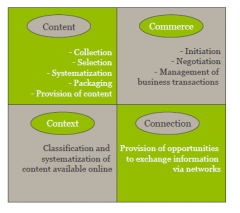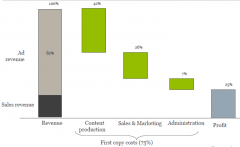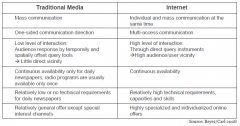- Barajar
ActivarDesactivar
- Alphabetizar
ActivarDesactivar
- Frente Primero
ActivarDesactivar
- Ambos lados
ActivarDesactivar
- Leer
ActivarDesactivar
Leyendo...
Cómo estudiar sus tarjetas
Teclas de Derecha/Izquierda: Navegar entre tarjetas.tecla derechatecla izquierda
Teclas Arriba/Abajo: Colvea la carta entre frente y dorso.tecla abajotecla arriba
Tecla H: Muestra pista (3er lado).tecla h
Tecla N: Lea el texto en voz.tecla n
![]()
Boton play
![]()
Boton play
![]()
12 Cartas en este set
- Frente
- Atrás
- 3er lado (pista)
|
Internet
|
Interconnected networks: Global Decentralized Network of individual computers or local, national or international networks through which data can be exchanged worldwide, standardized by Internet protocols TCP / IP.
|
Global Decentralized Network/TCP IP
|
|
How does it work?
|
Architecture of the Internet is based on the Client-Server Principle: From server computers (service providers) to deploy applications that are used by clients (service users)
|
Client Server Principle
|
|
Value chain
|

slide 213
|
|
|
Business model of Internet
|
-Foundation for many applications and uses (multi-media nature of the Internet)
-Content informational, educational or entertaining -Companies differentiate the services they offer -Business-to-consumer sector can be divided into segments 4C |
Many aplications
Many topics A way of differentiation 4C |
|
4 C
|

|
|
|
Revenuel models for content companies
|
1. Transaction-Based – Usage fee per download or the time
2. Transaction-Independent - Basic fee for regular, potential usage 3. Data-mining revenues - Sale of user profiles 4. Banner Advertising |
Some of them:
1. Pay per download 2. Basic fee 3. Sale of profiles 4. Banners |
|
Cost revenue model Internet
|

|
To have in mind:
Most revenue comes from Ads Content, marketing and administration fix cost. |
|
Opportunities of traditional media
|
1. Additional sales channel of unchanged products
2. Re-distribution of edited/adapted content to third parties 3. Autonomous parallel-product, which are independent from core product |
1. More channels to see
2. Re-distribution 3. Autonomous product |
|
Advantages
|
1. Additional consumers can be obtained
2. Customer retention can be strengthened 3. Differentiation and evaluation of products is possible 4. Benefits of brand name can be used |
1. Additional consumers
2. Retention 3. Differentiation 4. Use of brand |
|
Disadvantages
|
1. Unrealistic or lack of assessment of success
2. Transfer of unchanged products (1:1) to Internet does not meet requirments of medium 3. Additional costs for inhouse online editorial department 4. The greater the similarities between offline and online products, the higher the risk of cannibalization |
1. Unrealistic assessment
2. Transfer not 1:1 3. Inhouse departament 4. Cannubalization |
|
Are New Media a Threat to Traditional Media?
|
1. Advertising shifts to New Media
2. Online-classified ads can be easily searched and updated 3. Traditional media ads are also placed online 4. Options of combined advertising prices for old and New Media are used |
1. Adv -> Media
2.Adv easy updated 3. All adv on line 4. Packs new+old |
|
Traditional Media vs. Internet
|

|